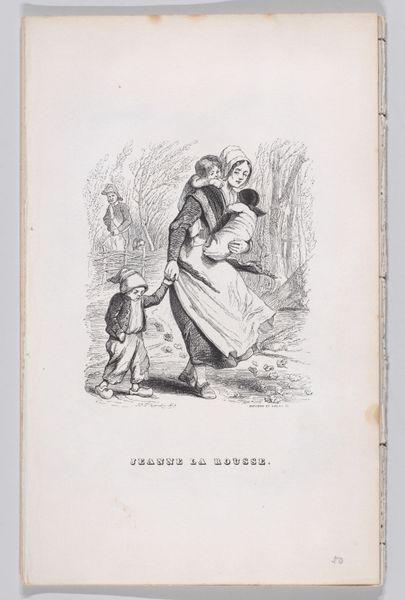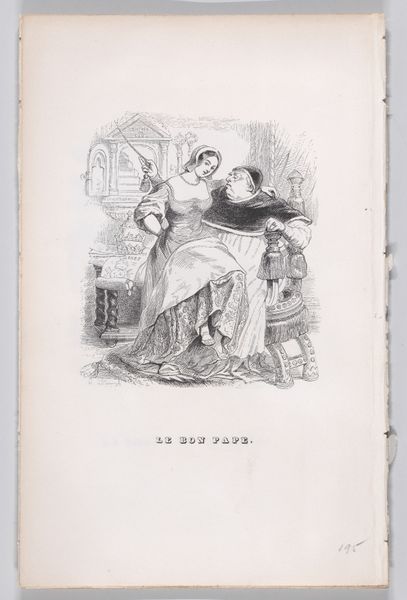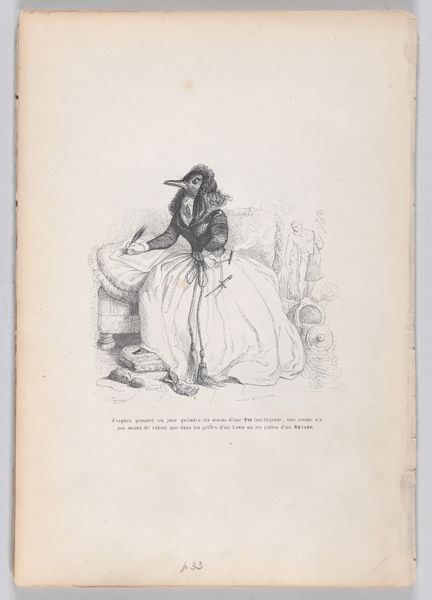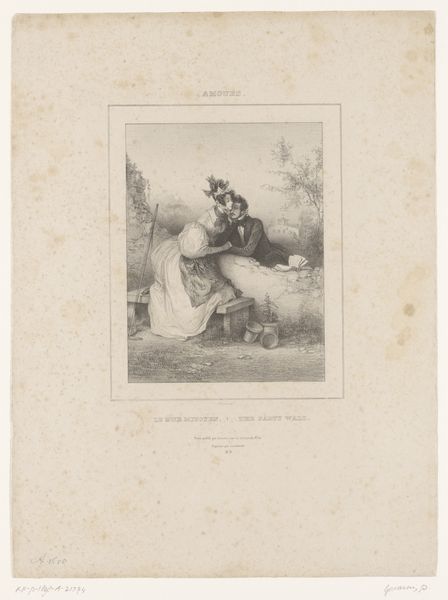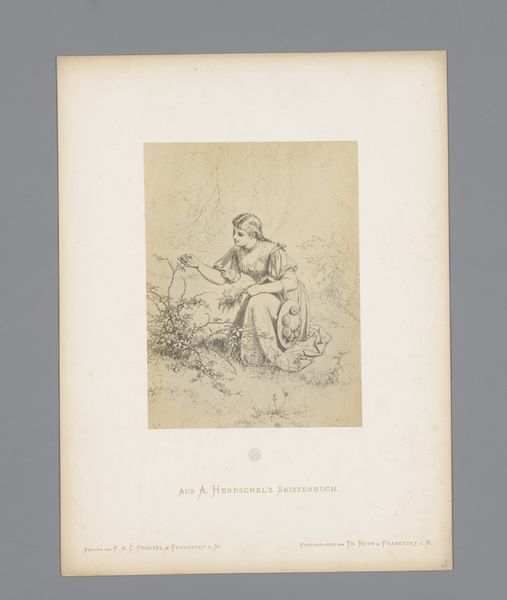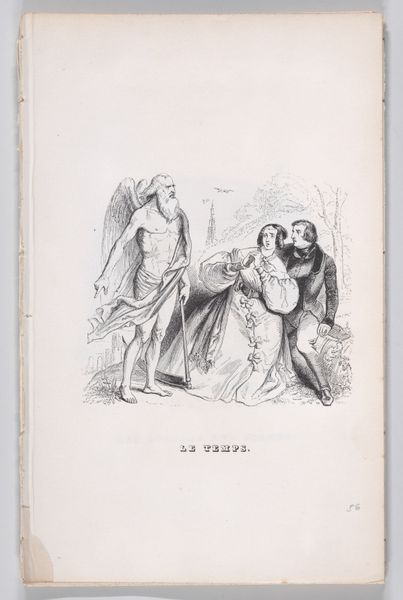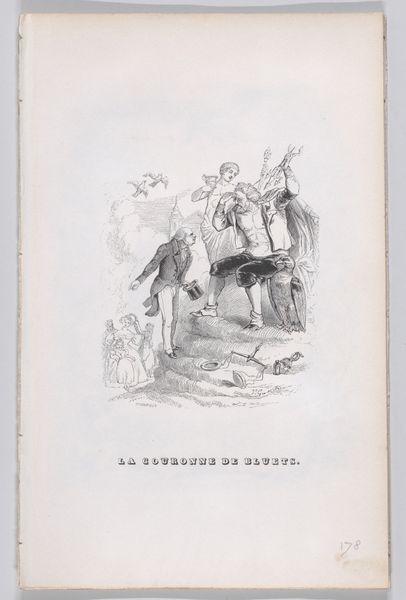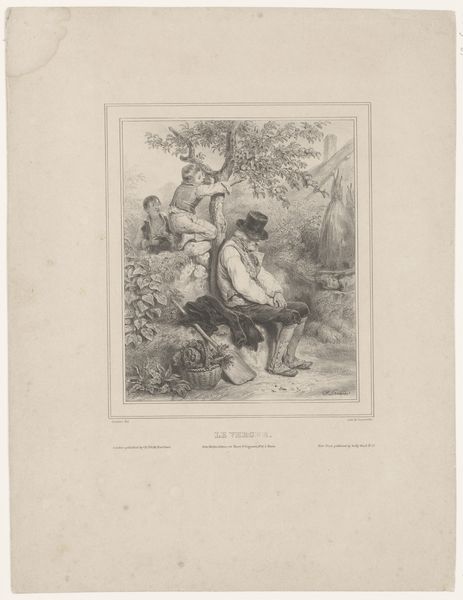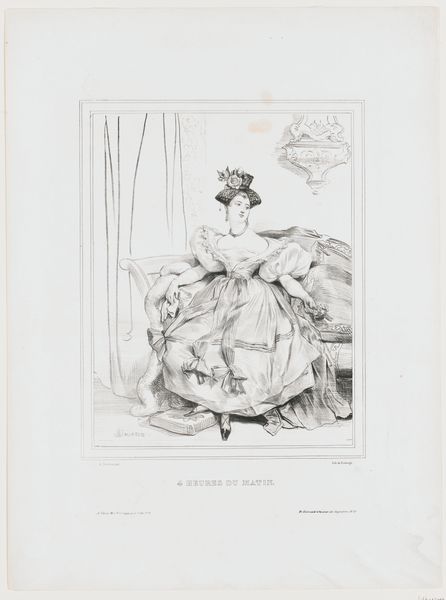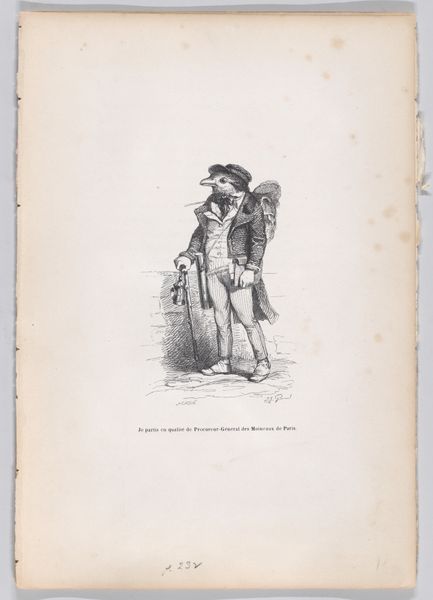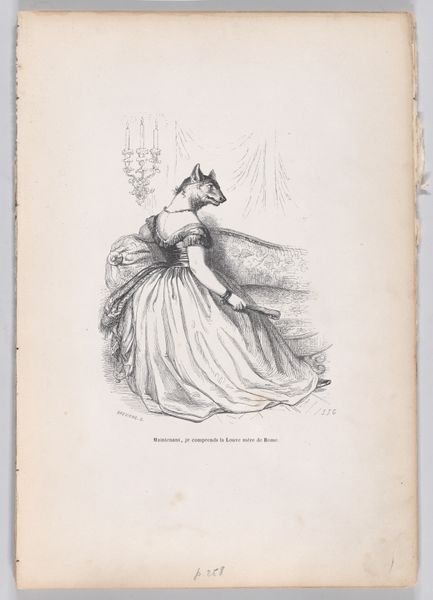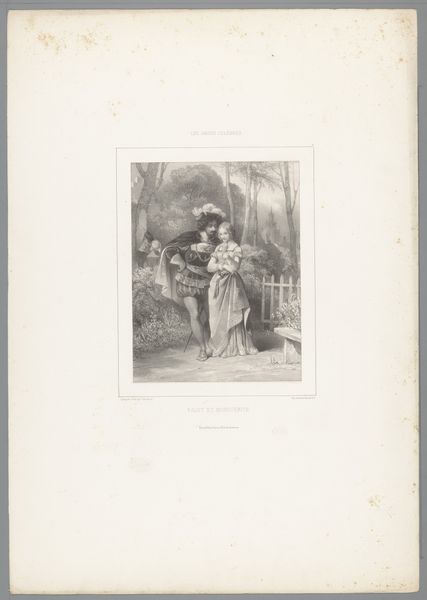
drawing, lithograph, print
#
drawing
#
allegory
#
lithograph
# print
#
fantasy-art
#
figuration
#
romanticism
Dimensions: Sheet: 8 5/8 × 5 1/2 in. (21.9 × 14 cm)
Copyright: Public Domain
Editor: Here we have "The Sylph" from *The Complete Works of Béranger*, a lithograph made in 1836 by J. J. Grandville, currently residing at the Metropolitan Museum of Art. The fine lines create such a delicate scene. How do you interpret this work? Curator: It's interesting to consider the cultural fascination with sylphs during the Romantic era. Consider how the sylph figure embodies a kind of freedom from earthly constraints. Note how she rests amongst lush foliage. The flora could symbolize nature's embrace, or perhaps even a hidden sensuality. Do you notice any other details that stand out to you? Editor: The dragonfly certainly captures my attention; it’s almost the same size as her! Curator: Excellent observation. The dragonfly is an ancient symbol – one with rich and varied meanings! In some traditions, it's associated with illusion and a connection to the spirit world. It might act as a psychopomp in this dreamlike landscape. What do you think of its placement so close to the figure's face? Editor: That placement creates an undeniable tension. It could signal a kind of subconscious yearning or, perhaps, a looming deception. Are we meant to trust her dream? Curator: Exactly. It evokes a sense of ambiguity. In Grandville's time, such images would have resonated with larger social questions, about nature versus artifice, and the rapidly changing world. It's a beautiful convergence of fantasy, nature, and deeply ingrained symbolic languages. Editor: Seeing the layers of meaning in the dragonfly itself has really changed how I view the whole piece. Thank you for sharing your insights! Curator: And thank you for bringing a fresh perspective.
Comments
No comments
Be the first to comment and join the conversation on the ultimate creative platform.
